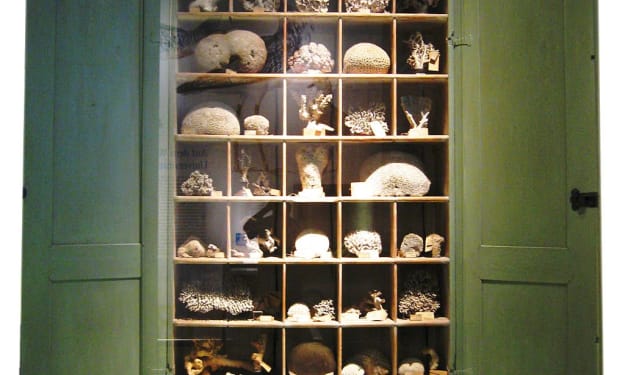The Crinoline
A fashion statement that reached absurd lengths during the 19th century

Throughout the history of women’s fashion, comfort and convenience have often played second fiddle to appearance, and the crinoline is an excellent example of this phenomenon.
The word comes from the French “crin”, meaning horsehair, and “lin”, which means linen. Crinoline was therefore the stiff fabric that was first used for the purpose of giving a garment “body” and pushing it outwards in a way that emphasised a woman’s curves, especially when combined with a corset that constricted the waist.
However, the word crinoline is generally used to mean the structure, made from whalebone or metal, that formed a framework over which the outer skirts were arranged. Especially during the 19th century, these fashion aids were taken to excess and caused all sorts of problems for their wearers.
The origins of the crinoline can be seen in the 16th century farthingale and 18th century panniers (“baskets”), the latter of which pushed the dress out sideways. This fashion was preferred by the aristocrats of the French “ancient regime” that disappeared with the French Revolution, to be followed by the much simpler (and more comfortable) “Empire line” in France and “Regency line” in England that were typical of the “Jane Austen” years of the early 19th century.
However, the growing prosperity of the Victorian era meant that more women were freed from the need to earn a living and could spend money on fashion and time on parading in it. As every age rebels against the one that preceded it, the trend towards an exaggerated hourglass figure, as against the “up and down” of the Empire line, was probably inevitable, especially as practicality was no longer essential.
As mentioned above, crinoline was originally the material from which petticoats were made, and the term was soon applied to the petticoats themselves. During the mid-19th century it was quite common for six or more layers of petticoat to be worn, which were heavy, uncomfortable and impractical, especially in hot weather. Hoops of whalebone or cane were used to strengthen the petticoats.
However, the crinoline really took flight when the metal cage crinoline was patented by an American, W S Thomson. This consisted of a series of circular hoops, increasing in diameter from the waist downwards, which were held together with vertical fabric strips. Women would only need to wear a single petticoat, to hide the outline of the hoops, over which the dress would be worn. The great advantage was increased comfort, especially as women could move their legs with greater freedom in a sort of tent.
One difference with this fashion trend was that it was copied by women in several strata of society, including working women. This therefore led to women in the upper strata, who did not work, being anxious to set themselves above the “hoi polloi” by wearing crinolines that were totally impractical by virtue of their size, supporting vast dresses that would clearly be beyond the budgets of women lower down the social scale.
When a woman wore a dress that swelled to six or more feet in diameter, problems were bound to arise. Not many doorways were that wide, and getting in and out of carriages was a real problem. Embarrassment was inevitable if a woman was to fall over (quite possible if a strong gust of wind blew inside the “tent”) and it became clear to everyone present that the owner of the crinoline possessed a pair of legs, which was a fact that the Victorians liked to ignore. Even sitting down was a problem if not planned carefully because, if one side of a hoop was sat upon, the opposite side would rise straight upwards, taking the dress with it right over the wearer’s face.
Even with the less extreme crinolines worn by women lower down the social scale, there were risks to be wary of, such as the danger of bumping into furniture and knocking ornaments off tables. This was a particular hazard in Victorian drawing rooms given that generation’s delight in cramming their rooms full of “occasional tables” and “what-nots” on which expensive china objects would be displayed.
A greater danger was posed by open fires. With a dress that was several feet from one’s body, it was quite possible for an edge to come into contact with a hot coal without one being aware of it, with disastrous consequences. Charles Dickens describes an incident of this nature in “Great Expectations” when Miss Havisham meets her end as the result of such an accident.
The impracticalities and dangers of the full crinoline began to be recognised as the century progressed, and the smaller “crinolette” came into use during the 1860s, this being a smaller cage that extended to the ground at the rear. This in turn gave way to the “bustle” that produced a hump at the back of the skirt.
The crinoline, as such, is justly regarded these days with mixed feelings of horror and mockery, but it has not completely died out. A form of the crinoline, albeit made of plastic and thus of relatively light weight, is a common feature of the traditional wedding dress, and the most extravagant of these would not be possible without a considerable amount of unseen engineering. Fortunately for most women, they only get married once and are thus spared the inconveniences suffered by their Victorian ancestors.
About the Creator
John Welford
I am a retired librarian, having spent most of my career in academic and industrial libraries.
I write on a number of subjects and also write stories as a member of the "Hinckley Scribblers".






Comments
There are no comments for this story
Be the first to respond and start the conversation.